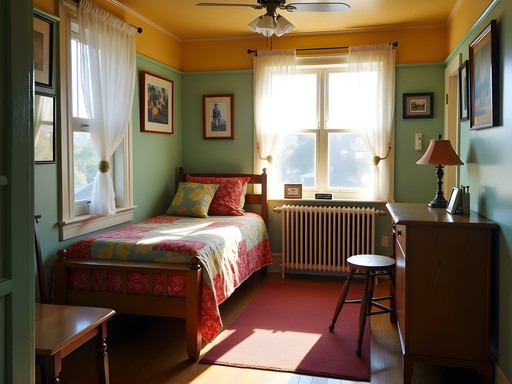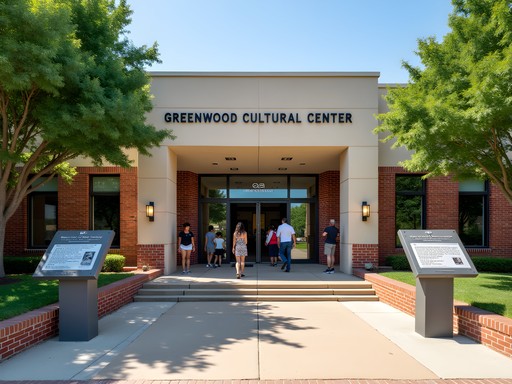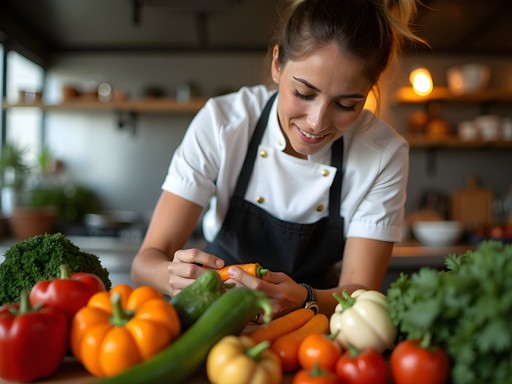Disclosure: This article contains affiliate links. We may earn a commission from purchases at no extra cost to you, which helps our travel content.
Standing at the intersection of Route 66 nostalgia and Art Deco splendour, Tulsa has quietly undergone a gastronomic metamorphosis that few outside Oklahoma have properly acknowledged. What was once a landscape dominated by hearty barbecue and comfort food has evolved into a sophisticated tapestry of culinary innovation, where pioneering chefs are reimagining the very essence of Midwestern cuisine. As someone who typically documents sustainable design across Scandinavian fjords or Japanese mountainsides, I found myself unexpectedly captivated by how this oil-boom city has transformed its food scene while honoring its architectural heritage.
Art Deco Dining: Where Architecture Meets Gastronomy
Tulsa's architectural identity is inseparable from its Art Deco legacy, and nowhere is this marriage of design and dining more evident than in the city's downtown district. The stunning Philcade Building now houses Oren, where Chef Matthew Amberg crafts seasonal plates that rival anything I've tasted in Copenhagen or San Francisco. The restaurant's interior thoughtfully preserves original brass fixtures while introducing sustainable materials that complement rather than compete with the historic elements.
Nearby, Duet occupies a meticulously restored 1920s building where jazz-age glamour provides the backdrop for innovative farm-to-table cuisine. What impressed me most was how the restaurant's design team incorporated energy-efficient lighting solutions that enhance the vintage atmosphere rather than detract from it—proof that sustainability and preservation can work in harmony.
For those venturing into Tulsa's Arts District, Juniper offers another architectural delight. Before dinner, I recommend taking a moment with your cocktail guide to appreciate how the drinks menu reflects the building's Deco heritage, with each signature cocktail named after an architectural element found within the space.

💡 Pro Tips
- Visit Oren on weeknights for a quieter experience and better opportunity to chat with staff about the building's history
- Request a table near the windows at Duet for views of downtown's Art Deco skyline
- Most downtown restaurants offer happy hour specials from 4-6pm, perfect for sampling multiple venues
From Oil Wells to Farm Wells: Tulsa's Sustainable Food Movement
Perhaps the most surprising aspect of Tulsa's culinary evolution is its embrace of sustainability—a value close to my heart as I document green design practices worldwide. The city once defined by petroleum is now home to an impressive network of urban farms, regenerative agriculture projects, and chefs committed to minimal food miles.
Farmhouse Fresh Market in the Kendall Whittier district exemplifies this shift. What began as a modest farmers' market has expanded into a year-round food hall where local producers showcase everything from heritage grain breads to regeneratively raised beef. I spent a fascinating morning interviewing the market's founder, who transformed a disused industrial space into an energy-efficient hub using reclaimed materials and passive cooling techniques.
For a hands-on experience, I joined a workshop at Living Kitchen Farm & Dairy, just outside the city. Their fermentation kit provided everything needed to learn traditional food preservation methods that Oklahoma homesteaders once relied upon. The workshop takes place in a straw bale structure that maintains perfect temperature without mechanical cooling—a brilliant example of vernacular design principles applied to modern food production.

💡 Pro Tips
- Visit Farmhouse Fresh on Saturday mornings when all vendors are present and chef demonstrations occur hourly
- Book Living Kitchen Farm's dinner series at least two months in advance—they sell out quickly
- Many sustainable restaurants offer kitchen tours if requested when making reservations
Barbecue Reimagined: Traditional Techniques Meet Modern Sensibilities
One cannot discuss Tulsa's food scene without acknowledging its barbecue heritage. Rather than abandoning these traditions, innovative pitmasters are refining them through sustainable practices and architectural ingenuity. At Burnco BBQ, third-generation pitmaster James Burrell has installed a sophisticated heat recovery system that captures excess energy from his smokers to heat the restaurant during winter months—a brilliant design solution I documented for a sustainability series I'm producing.
For the home enthusiast looking to recreate authentic Oklahoma barbecue flavors, I've found the spice grinder essential for preparing custom dry rubs. After spending an afternoon with Burnco's pitmaster, I learned that freshly ground spices make a remarkable difference in developing complex flavor profiles.
Meanwhile, Fry's Barbecue in East Tulsa represents a fascinating cultural fusion. The Vietnamese-American owners have created a menu that marries traditional Oklahoma smoking techniques with Southeast Asian flavor profiles. Their architectural approach is equally innovative—they've retrofitted a former gas station with passive ventilation systems that eliminate the need for energy-intensive extraction fans while creating a comfortable dining environment.

💡 Pro Tips
- Visit barbecue joints before 2pm to ensure they haven't sold out of signature items
- Ask for a tour of the smokers—most pitmasters are happy to show off their setups
- Many barbecue restaurants offer 'community tables' where solo diners can join others—perfect for conversations with locals
Cocktail Culture: Speakeasies and Rooftop Views
Tulsa's beverage scene deserves special mention, particularly for couples seeking atmospheric evening venues. The city's prohibition-era history has inspired a collection of speakeasy-style establishments tucked within its Art Deco landmarks. The Vault occupies a former bank building, where the original vault door now serves as the entrance to an intimate cocktail lounge. Their commitment to local spirits and house-made ingredients impressed me, particularly their use of bitters set which allows bartenders to create custom flavor profiles for each seasonal menu.
For a different perspective, Roof Sixty-Six offers panoramic views of downtown from its carefully designed rooftop space. The owners worked with local architects to create a space that remains comfortable year-round through passive design strategies rather than energy-intensive heating and cooling. I spent a memorable evening there with fellow design enthusiasts, discussing how the space's flow encourages conversation while framing perfect views of Tulsa's architectural landmarks.
Most impressive was Saturn Room, a tiki bar that defies expectations. Beyond excellent tropical cocktails, they've implemented a comprehensive sustainability program that eliminates single-use plastics and sources ingredients from within a 100-mile radius whenever possible—proof that even indulgent experiences can align with environmental values.

💡 Pro Tips
- Make reservations for The Vault in advance and request the banker's table for the best atmosphere
- Visit Roof Sixty-Six at sunset for spectacular photography opportunities of downtown
- Ask bartenders about off-menu cocktails that showcase local Oklahoma spirits
Culinary Souvenirs: Taking Tulsa's Flavors Home
One of my documentary producer habits is collecting items that help me relive travel experiences through taste and texture. Tulsa offers abundant opportunities for culinary souvenirs that reflect its gastronomic renaissance.
Mother Road Market, housed in a brilliantly repurposed industrial building, serves as a food hall and retail space where local producers showcase shelf-stable creations. I was particularly impressed with their hot sauce set featuring Oklahoma-grown peppers with flavor profiles that range from smokehouse heat to citrus-infused warmth.
For those interested in Oklahoma's native ingredients, Tribe to Table offers a thoughtfully curated selection of indigenous foods, including hand-harvested wild rice, hickory syrup, and pawpaw preserves. The shop itself is an architectural gem—a contemporary space designed in collaboration with Cherokee Nation architects that tells the story of indigenous foodways through both products and design elements.
Before leaving town, I stocked my carry-on with freshly roasted beans from Cirque Coffee Roasters, where the roasting facility's transparent design allows visitors to observe the entire process. Their coffee grinder is the same model they recommend to customers who want to recreate their precise brewing methods at home—I've been using mine daily since returning to Hamilton.

💡 Pro Tips
- Visit Mother Road Market on Thursdays when new products are typically introduced
- Ask for vacuum-sealing at Tribe to Table to ensure products travel well
- Many local producers offer shipping services if your purchases won't fit in your luggage
Final Thoughts
As my weekend in Tulsa drew to a close, I found myself reflecting on how this underrated city embodies principles I've documented worldwide: thoughtful adaptation of historic architecture, commitment to sustainability, and respect for cultural heritage while embracing innovation. The culinary scene here isn't merely about food—it's a manifestation of Tulsa's broader renaissance, where creative minds are reimagining the city's identity through adaptive reuse and forward-thinking design.
For couples seeking a gastronomic getaway that offers substance beyond trendy interiors and photogenic plates, Tulsa delivers an experience that engages both mind and palate. The city's manageable scale allows visitors to explore multiple neighborhoods in a single weekend while still having time for meaningful conversations with the passionate individuals driving this culinary evolution.
As I boarded my flight back to Hamilton, my notebook filled with design insights and my camera roll with architectural details, I realized that sometimes the most illuminating perspectives on sustainability and design come from unexpected places—like a former oil capital in America's heartland that's redefining itself one thoughtful meal at a time.
✨ Key Takeaways
- Tulsa's Art Deco architecture provides a stunning backdrop for innovative dining experiences
- The city's sustainable food movement represents a remarkable pivot from its oil industry heritage
- Traditional Oklahoma cooking techniques are being preserved while incorporating global influences
- Many restaurants occupy thoughtfully restored historic buildings, creating unique dining environments
- The city's walkable districts make it ideal for a food-focused weekend getaway
📋 Practical Information
Best Time to Visit
year-round, though spring and fall offer ideal temperatures for walking between venues
Budget Estimate
$150-300 per couple per day for meals and drinks
Recommended Duration
2-3 days
Difficulty Level
Beginner
















Comments
Sophia Gomez
This post brought back so many memories! I was in Tulsa for a business conference last year and had a similar revelation. The juxtaposition of those gorgeous Art Deco buildings housing such innovative restaurants really tells the story of a city reinventing itself. I still dream about the brisket at Burn Co and the cocktail program at The Vault (literally in an old bank vault!). One spot I'd add to your list is Mother Road Market - it's a food hall concept that showcases local chefs and startups. Perfect for lunch when you want to try a bit of everything. And the rooftop bar at Mayo Hotel gives you the best sunset views while sipping an Old Fashioned! Tulsa really is having its moment. Can't wait to go back.
islandchamp
Great post! I'm intrigued by the sustainable food movement section. Are there any farm-to-table restaurants that are particularly good for vegetarians? Heading there in October.
backpackguy
Check out Tallgrass Prairie Table! They had amazing veggie options and source almost everything locally. The roasted vegetable plate was incredible.
islandchamp
Thanks for the tip! Adding it to my list.
greenseeker6390
Those Art Deco restaurants look incredible! Love the architecture + food combo.
photoclimber
This sounds amazing! I'm planning a Route 66 road trip next month and wasn't planning to spend much time in Tulsa. Should I add an extra day there just for the food? Any specific spots that are absolute must-visits for a first-timer?
greenseeker6390
DO IT. Definitely worth an extra day.
Blake Murray
Absolutely add that extra day! Don't miss Hodges Bend for breakfast, Burn Co for lunch, and Juniper for dinner if you can only do one day. And grab my food guide if you want my full recommendations!
backpackguy
Just got back from Tulsa last week and I was BLOWN AWAY by the food scene! Totally agree about the BBQ renaissance - tried Burn Co and it changed my life. The Art Deco dining spots are such a unique experience too. Who knew Oklahoma was hiding all this culinary gold? Definitely not the flyover state experience I expected. Blake, you nailed the description of that intersection between tradition and innovation happening there.
Sophia Gomez
Right?! I visited Tulsa on a business trip last year and ended up extending my stay just to eat more! Did you try any of the speakeasies mentioned in the article? The cocktail scene really surprised me.
backpackguy
Yes! Made it to Valkyrie and was impressed. Craft cocktails that would stand up to anything in NYC or Chicago but without the attitude. Bartender spent like 15 minutes telling me about local distilleries.
Casey Andersson
Blake, your piece on Tulsa reminds me why I love exploring America's mid-sized cities. I spent three luxurious days there last spring and was blown away by the juxtaposition of oil-boom history and contemporary cuisine. The tasting menu at Prhyme was worth every penny - that locally-raised wagyu paired with Oklahoma wines was a revelation! What fascinated me most was how many chefs had returned home after stints in NYC or LA, bringing techniques back but applying them to local ingredients. The cocktail program at Saturn Room transported me straight to 1920s Tulsa high society. For anyone visiting, don't miss brunch at Dilly Diner - their homemade pop tarts are Instagram gold and actually delicious. Blake, did you get to try the Cherokee purple tomato dishes that were everywhere when I visited?
photogal
Those rooftop bar photos are STUNNING! The sunset over downtown Tulsa looks magical. Adding this to my must-visit list for 2026!
greenclimber
Just got back from Tulsa last week! The barbecue scene is legit. We tried Burn Co like you mentioned and the line was worth every minute. Also stumbled on this place called Lone Wolf that does these crazy Korean-fusion bahn mi sandwiches. My husband still won't stop talking about it. The Art Deco architecture really does make dinner feel special there.
wintertime
Lone Wolf is going on my list! Did you need reservations for most places?
greenclimber
Lone Wolf is counter service, super casual. But definitely make reservations for Prhyme and Juniper on weekends. They fill up fast!
Gregory Boyd
Fascinating to see how secondary American cities are driving culinary innovation these days. I passed through Tulsa last year while doing a Route 66 road trip and was genuinely surprised by the quality. The farm-to-table movement there feels more authentic than in many coastal cities - less pretentious, more focused on the actual food relationships. Blake, did you make it to Kilkenny's? Their fusion of Irish pub fare with Oklahoma ingredients was unexpectedly brilliant. I documented the whole Route 66 food scene in my travel journal which was perfect for food notes and collecting business cards from these amazing spots.
nomadway
Blake, which speakeasy had the best cocktails? Planning a weekend trip and need to know where to make reservations!
Venture X
Premium card with 2X miles, $300 travel credit, Priority Pass